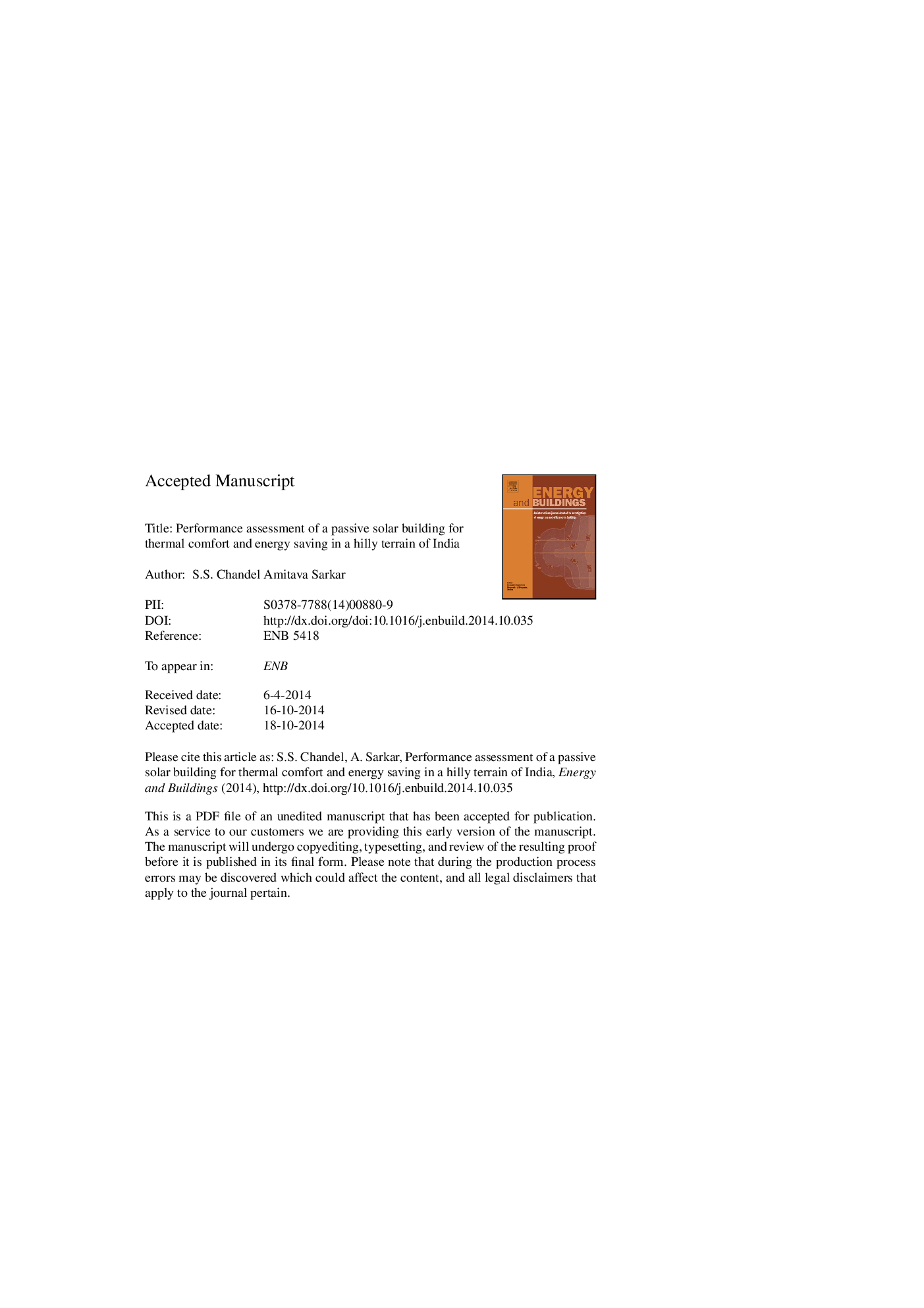| Article ID | Journal | Published Year | Pages | File Type |
|---|---|---|---|---|
| 6733124 | Energy and Buildings | 2015 | 43 Pages |
Abstract
The construction of passive solar buildings in government sector has been made mandatory in the western Himalayan Indian state of Himachal Pradesh. A number of passive solar buildings are constructed in the state to reduce dependence on conventional energy sources. In this study, results of a constructed passive solar building in Mandi town are presented. The passive solar architectural design features in the building include: modification of floor plans, fenestration and external shading design, providing solar air-heating panels, creating cross-ventilation, warm air circulation during winters and appropriate glazing for fenestrations. The main objective was to maintain indoor-thermal comfort and reduce annual energy consumption. Thermal comfort conditions in the building are analysed through a field survey as per ASHRAE Standard 55 protocols. The impact of passive solar features on heating, cooling and energy savings is evaluated using e-Quest simulation software. The indoor thermal comfort operative temperature in winters is found to range between 15.0 °C and 17.7 °C. The space heating, cooling and mechanical ventilation loads and total annual energy consumption are found to be reduced due to passive solar design features in the building. Follow-up research areas are also identified.
Related Topics
Physical Sciences and Engineering
Energy
Renewable Energy, Sustainability and the Environment
Authors
S.S. Chandel, Amitava Sarkar,
